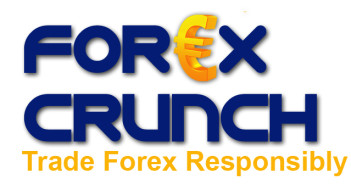After threatening to fall down through 1.25 yesterday morning, the single currency bounced back to the 1.26 area in the afternoon in response to a Bloomberg story claiming that the ECB will sterilise all purchases under Mario Draghi’s sovereign bond-buying plan.
In addition, Bloomberg claimed that the ECB will commit to unlimited purchases out to three years, and that the central bank will not specify any outright yield or spread targets. On the question of seniority, it appears that the ECB has decided that any purchases will not rank ahead of other bond-holders.
Guest post by Forex Broker FxPro
Worryingly, this whole process will further weaken the ECB’s already damaged balance sheet. This is a critical period for the single currency, in that the low 1.26 region is being tested for a second time. On the first occasion, it was met with a wall of selling. Also, many technicians are of the view that getting much above 1.26 will be very difficult for the euro. That said, those of a bullish disposition will want to see the euro jump above the 1.2624 level quickly, which was the low set back in January. If the euro manages to clear this region, then we could expect a rapid move higher, because there is probably a wall of stops above this area.
Commentary
The stall in sterling. Not for the first time, today’s Bank of England rate decision is being somewhat over-shadowed by the ECB meeting taking place just 45 minutes later. With the BoE having announced more QE in July, it’s unlikely that we’ll see more on this until the current tranche has run its course. There has been some greater debate recently regarding the merits of a further lowering of the main bank rate from the current 0.5%, but King was dismissive of such suggestions at the quarterly press conference last month. His main concern is the damage it may inflict on some financial institutions, precisely at the time when the bank is taking a greater role in financial stability. As for sterling, it’s been showing an improved tone in the past few sessions vs. the euro. In the wider picture, sterling seems to be in something of a holding pattern, both vs. the euro and also the dollar. It’s still worth keeping a close eye on cable though, as that’s where the risk of a push higher appears stronger, should the 1.5915/20 area give way.
Another dip in jobs down under. The odds of a further reduction in the cash rate down under within the next couple of months shortened significantly overnight with the news that employment fell by nearly 9K in August. Although the unemployment rate dipped to 5.1% (from 5.3% in July), this was principally due to yet another decline in the labour force participation rate, which fell to a 5yr low of just 65%. In response, the Aussie initially dropped to a low of 1.0168, but shorts were forced to scramble for cover once the 5.1% print on unemployment hit the screens. Although the Aussie is back through 1.02, it still looks vulnerable on some of the key crosses. EUR/AUD almost reached 1.24 overnight, while GBP/AUD traded above 1.56.
Switzerland’s pain. Today marks the first anniversary of the SNB’s imposition of a cap on the CHF (limiting EUR/CHF to 1.20) and promising to sell francs in “unlimited amounts†in order to defend this level.  There’s no doubt that it’s been a tough year for the SNB, especially during the past 4 – 5 months when the pressure on the franc has been that much stronger and FX reserves have ballooned as a result. Indeed, reserves now are roughly 70% of GDP. There have been times (towards the end of last year) when some have speculated that the EUR/CHF peg might be moved higher and also when it was felt it may not hold (early April this year and beyond). The peg may have held fast, but it’s not been without cost. As well as investing and managing such a reserve pile, the SNB has also had to contend with the impact of this increased Swiss franc-liquidity on the domestic economy. This remains the main risk for next week, namely that new measures are announced to curtail the impact of liquidity, most notably in the property market. Indeed, comments yesterday by SNB board member Danthine emphasised the risks in the property market. It’s ironic that, in avoiding the property-related excesses of others and the sovereign problems of much of the eurozone, the SNB is now facing such bubble risks in the property sector as a by-product of defending the franc. Whilst inflation data out yesterday rose (but remains at -0.5% YoY), it also serves as a reminder that focusing solely on inflation is a broken approach, as risks to financial stability build elsewhere.



